
NUMERISCHE MATHEMATIK
Scope & Guideline
Advancing the frontiers of applied mathematics since 1959.
Introduction
Aims and Scopes
- Numerical Methods for Partial Differential Equations (PDEs):
The journal extensively publishes research on numerical techniques for solving various classes of PDEs, including elliptic, parabolic, and hyperbolic equations, often incorporating innovative discretization methods. - Error Analysis and Numerical Stability:
A core focus is on rigorous error analysis and stability assessments of numerical schemes, ensuring that methods are not only effective but also reliable in practical applications. - Adaptive and High-Order Methods:
Research on adaptive methods that adjust to solution features and high-order numerical methods is prevalent, aimed at improving accuracy and efficiency in computational simulations. - Applications in Real-World Problems:
The journal features studies that apply numerical techniques to real-world problems, such as fluid dynamics, materials science, and biological systems, highlighting the interdisciplinary nature of numerical mathematics. - Hybrid and Multiscale Methods:
There is a consistent emphasis on hybrid methods combining different numerical approaches and multiscale techniques, addressing complex phenomena across various scales.
Trending and Emerging
- Machine Learning and Data-Driven Approaches:
An increasing number of papers are exploring the integration of machine learning techniques with numerical methods, indicating a trend towards utilizing data-driven approaches to enhance numerical simulations and predictions. - Fractional Differential Equations:
Research on fractional differential equations is gaining momentum, highlighting their importance in modeling real-world phenomena with memory and non-local effects. - Stochastic Methods and Uncertainty Quantification:
There is a growing emphasis on stochastic numerical methods and uncertainty quantification, reflecting the need to address randomness and uncertainty in mathematical modeling. - Multiscale and Multiphysics Problems:
The journal is increasingly publishing works that focus on multiscale and multiphysics problems, showcasing the complexity of real-world systems that require sophisticated numerical approaches. - Parallel and High-Performance Computing:
Emerging trends include the development of numerical methods optimized for parallel and high-performance computing environments, catering to the increasing computational demands of modern simulations.
Declining or Waning
- Basic Numerical Analysis Techniques:
There is a noticeable decline in publications focusing solely on basic numerical analysis techniques, as the field increasingly moves towards more complex and application-driven methodologies. - Traditional Finite Element Methods without Adaptivity:
Research that does not incorporate adaptive or high-order elements in finite element methods appears to be waning, as the demand for more sophisticated approaches grows. - Single-Domain Approaches:
The journal has seen fewer publications on single-domain numerical methods, as researchers are increasingly exploring multi-domain and hybrid approaches to tackle complex problems. - Static Models in Fluid Dynamics:
There is a reduction in studies focusing on static fluid dynamics models, with a shift towards dynamic and time-dependent models that reflect more realistic scenarios.
Similar Journals

BIT NUMERICAL MATHEMATICS
Elevating Research in Algorithm Development.BIT Numerical Mathematics, published by Springer, is a prestigious journal in the field of Applied Mathematics and Computational Mathematics, with an ISSN of 0006-3835 and an E-ISSN of 1572-9125. Since its inception in 1961, the journal has become a cornerstone for researchers and practitioners alike, offering high-quality articles that advance the understanding and application of numerical methods in various domains. With its impressive 2023 rankings in the Q1 category for multiple disciplines—including Applied Mathematics, Computational Mathematics, Computer Networks and Communications, and Software—the journal consistently showcases significant contributions to the mathematical community. Although it does not offer Open Access, BIT Numerical Mathematics continues to reach a vast audience through its rigorous peer-reviewed content. As it converges towards 2024, the journal remains committed to publishing cutting-edge research that addresses fundamental challenges in numerical analysis and algorithm development, ensuring its relevance in an ever-evolving scientific landscape.
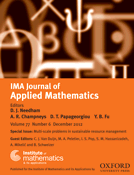
IMA JOURNAL OF APPLIED MATHEMATICS
Advancing the Frontiers of Applied MathematicsThe IMA Journal of Applied Mathematics, published by Oxford University Press, serves as a pivotal platform for disseminating innovative research in the field of applied mathematics. With its ISSN 0272-4960 and E-ISSN 1464-3634, the journal has established itself as an essential resource for academics and practitioners, showing notable engagement with both theoretical and practical aspects of mathematics. Spanning over five decades since its inception in 1965, the journal covers a broad range of topics aimed at addressing complex real-world problems through mathematical modeling and computational techniques. Holding a Q3 quartile ranking in the applied mathematics category for 2023, and a Scopus rank of #310 out of 635, it plays a significant role in contributing to the academic discourse within this dynamic field. Despite not being open access, the journal's robust reputation and commitment to rigorous peer review ensure that cutting-edge research remains accessible to its audience of researchers, professionals, and students dedicated to advancing mathematical sciences. Its ongoing commitment to exceptional scholarship makes the IMA Journal of Applied Mathematics a vital resource for those seeking to explore and apply mathematical principles in various contexts.
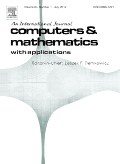
COMPUTERS & MATHEMATICS WITH APPLICATIONS
Advancing the Frontiers of Computational InsightCOMPUTERS & MATHEMATICS WITH APPLICATIONS is a prestigious academic journal published by PERGAMON-ELSEVIER SCIENCE LTD, focusing on the intersection of computational mathematics and applicable computational methodologies. With a robust history spanning from 1975 to 2024, the journal proudly ranks in the top quartiles for its categories—achieving Q2 in Computational Mathematics and Q1 in both Computational Theory and Mathematics, and Modeling and Simulation for the year 2023. It holds an impressive position in the Scopus Ranks, being placed in the 79th percentile for Computational Mathematics and 78th percentile for both Modeling and Simulation and Computational Theory and Mathematics. Although it does not currently offer Open Access, the journal remains a pivotal resource for researchers, professionals, and students seeking cutting-edge research and developments in computational applications. Its significance in the field is underscored by its commitment to publishing high-quality, peer-reviewed articles that push the boundaries of knowledge and innovation, supporting the academic community's strides towards solving real-world problems through mathematics and computation.
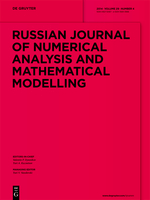
RUSSIAN JOURNAL OF NUMERICAL ANALYSIS AND MATHEMATICAL MODELLING
Empowering Research through Rigorous Computational TechniquesRUSSIAN JOURNAL OF NUMERICAL ANALYSIS AND MATHEMATICAL MODELLING, published by WALTER DE GRUYTER GMBH in Germany, is a vital resource for researchers and practitioners in the fields of numerical analysis, mathematical modeling, and computational mathematics. With an ISSN of 0927-6467 and an E-ISSN of 1569-3988, this journal has been disseminating significant findings since its inception in 1986 and continues to do so into 2024. Despite its current position in Q4 category quartiles and modest Scopus rankings, it provides a platform for innovative research that contributes to the evolution of modeling and simulation techniques. The journal is committed to fostering an understanding of complex numerical methods and their applications across various scientific disciplines. Although it does not provide Open Access options, it remains a key publication that underscores the importance of rigorous mathematical analysis and its practical implications in today's technology-driven world.

JOURNAL OF SCIENTIFIC COMPUTING
Connecting Theory and Practice in Scientific ComputingJOURNAL OF SCIENTIFIC COMPUTING, published by Springer/Plenum Publishers, stands as a premier venue for disseminating innovative research in the domains of applied mathematics, computational mathematics, and numerical analysis, among others. With an illustrious history spanning from 1986 to 2024, this journal has established itself as a vital resource for scholars and practitioners, reflected in its Q1 status in multiple categories including Applied Mathematics and Software, as per the 2023 rankings. The journal features a rigorous peer-review process, ensuring high-quality publications that contribute to the advancement of theoretical and practical knowledge in scientific computing. Although not open access, the journal provides critical insights and methodologies that are invaluable for advancing computational techniques in engineering and mathematics. With impressive Scopus rankings, including being in the 78th percentile for Numerical Analysis, JOURNAL OF SCIENTIFIC COMPUTING is essential reading for researchers, professionals, and students aiming to stay at the forefront of scientific innovation.

JSIAM Letters
Connecting Researchers and Practitioners in MathematicsJSIAM Letters, with ISSN 1883-0609 and E-ISSN 1883-0617, is an esteemed journal published by the Japan Society of Industrial and Applied Mathematics (JSIAM). Focusing on the latest advancements in the field of industrial and applied mathematics, this journal serves as a vital platform for researchers, professionals, and students to disseminate their findings and exchange innovative ideas. Although it currently does not offer Open Access options, JSIAM Letters maintains a strong reputation for high-quality, peer-reviewed articles that contribute to the growth and application of mathematical techniques in various industrial contexts. With a commitment to fostering collaboration within the mathematical community, JSIAM Letters plays a crucial role in bridging the gap between theoretical research and practical application, making it indispensable for anyone interested in the intersection of math and industry.
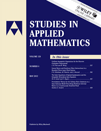
STUDIES IN APPLIED MATHEMATICS
Innovating insights in applied mathematics since 1922.STUDIES IN APPLIED MATHEMATICS is a premier academic journal published by WILEY, dedicated to advancing the field of applied mathematics. With its ISSN 0022-2526 and E-ISSN 1467-9590, this journal has established itself as a critical resource for researchers and practitioners alike, evident from its impressive Q1 ranking in the Applied Mathematics category and robust Scopus rank of #121/635, placing it in the top 81st percentile. Since its inception in 1922, this journal has disseminated high-quality research that bridges theoretical mathematics and real-world applications, catering to a diverse array of academic and professional interests. While currently not an open-access publication, its legacy of rigorous peer-reviewed articles contributes significantly to the knowledge base in applied mathematics, making it an essential read for anyone invested in the mathematical sciences. Based in the United Kingdom, STUDIES IN APPLIED MATHEMATICS continues to foster innovation and collaboration in mathematics through its comprehensive and insightful contributions.

Advances in Applied Mathematics and Mechanics
Fostering Collaboration in Applied Mathematics and MechanicsAdvances in Applied Mathematics and Mechanics is a premier academic journal published by GLOBAL SCIENCE PRESS that focuses on the latest research and innovative developments in the fields of applied mathematics and mechanical engineering. Since its inception in 2009, this journal has consistently contributed to the advancement of knowledge, garnering a respectable Q2 ranking in both Applied Mathematics and Mechanical Engineering categories, reflecting its significance in enhancing scientific discourse. With an impactful reach, as evidenced by its Scopus rankings, this journal hosts cutting-edge research, theoretical advancements, and practical applications that serve as invaluable resources for researchers, professionals, and students alike. While it operates under a subscription model, the accessibility of vital research findings is critical for driving innovation within these interrelated disciplines. The journal’s scope encompasses a broad range of topics, from computational methods to engineering applications, positioning it as a crucial platform for interdisciplinary collaboration and knowledge sharing in an ever-evolving academic landscape. For prospective authors and readers, Advances in Applied Mathematics and Mechanics stands as a key contributor to confidently navigating the nexus of applied mathematics and mechanics.
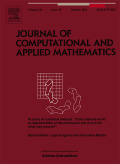
JOURNAL OF COMPUTATIONAL AND APPLIED MATHEMATICS
Empowering Innovation Through Computational InsightsJOURNAL OF COMPUTATIONAL AND APPLIED MATHEMATICS, published by Elsevier, stands as a premier platform for researchers and practitioners in the fields of applied and computational mathematics. With an impressive convergence history from 1975 to 2025, this journal has established itself as a crucial reference point for innovative mathematical theories, methodologies, and applications. Holding a distinguished position in Scopus rankings—#85 out of 635 in Applied Mathematics and #36 out of 189 in Computational Mathematics—it operates in the highly competitive Q2 quartile for both disciplines as of 2023. Although currently not designated as an open-access journal, it remains widely respected for its rigorous peer-review process and high-quality research contributions. Researchers and professionals seeking to advance their work and engage with cutting-edge developments will find this journal an invaluable resource, fostering a deeper understanding and collaboration within the mathematical community.

Frontiers of Mathematics
Unlocking Potential Through Open Access MathematicsFrontiers of Mathematics, published by SPRINGER HEIDELBERG, is an emerging academic journal dedicated to fostering the advancement of mathematical sciences from 2023 to 2024. With an ISSN of 2731-8648 and E-ISSN of 2731-8656, this journal is positioned in the category of Q2 in the miscellaneous mathematics domain, showcasing its commitment to quality research and innovation. Although in its nascent stages, it has swiftly established a foothold within the global academic landscape, holding a Scopus rank of #198/399 and a median percentile of 50, indicating a promising trajectory. By providing an open-access option, Frontiers of Mathematics ensures broad dissemination of research findings, fostering collaboration and knowledge sharing across the mathematical community. Researchers, professionals, and students alike will find this journal to be an invaluable resource, contributing to important discussions and advancements in various mathematical fields.